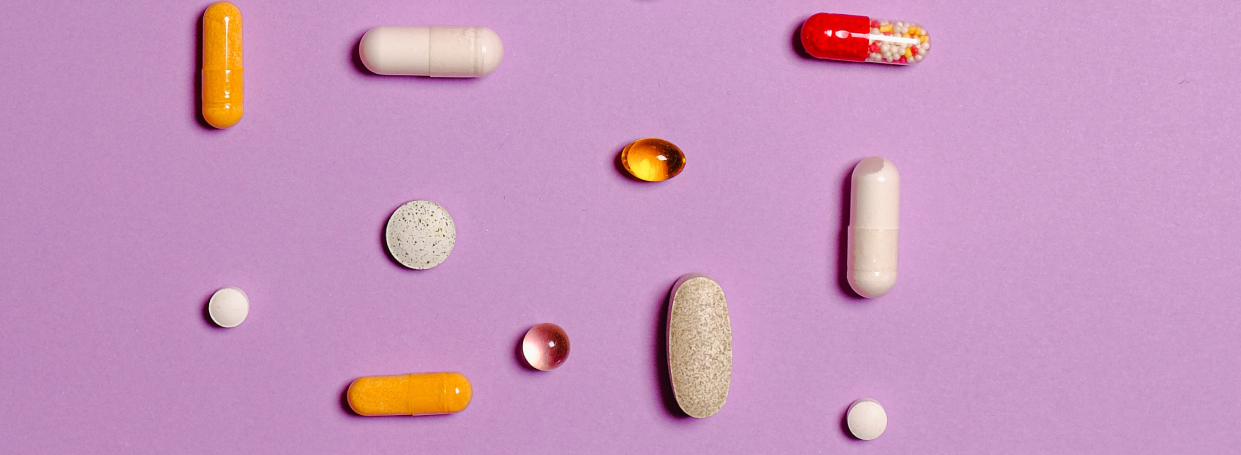

Dysmenorrhea is the medical term for period pain. You may get cramps or other discomforts before or during your period. Over 50% of women experience menstruation-related pain for 1-2 days per month. Some women have such severe pain that it stops them from doing daily activities for a few days. There are 2 different kinds of dysmenorrhea: primary dysmenorrhea and secondary dysmenorrhea.
This article has been verified by a medical professional
Primary dysmenorrhea is cramping caused by the body’s own production of prostaglandins. These are chemicals produced by your uterine lining which build up over the course of your cycle and make your uterus contract. The pain tends to be the strongest on the first day you start bleeding and goes down as you shed your uterine lining through menstruation. Some cycles may be more or less painful than others.
Secondary dysmenorrhea is when painful periods are due to a reproductive health condition which may also be impacting fertility.
Potential causes of secondary dysmenorrhea
Painful periods can be a symptom of the following conditions:
- Endometriosis (a common condition where tissue similar to the uterine lining grows in other areas)
- Adenomyosis (when tissue that normally lines the uterus grows on the muscular wall of the uterus)
- Uterine fibroids (non-cancerous growths on the uterus)
- Pelvic inflammatory disease (an infection caused by bacteria such as chlamydia or gonorrhea)
- Uterine polyps (growths inside the uterine cavity)
- Cervical stenosis (narrowing or closure of the cervix)
Pain from secondary dysmenorrhea typically begins earlier in the cycle and lasts longer than common cramps.
Impact of dysmenorrhea on fertility
Primary dysmenorrhea doesn’t affect fertility. Secondary dysmenorrhea, on the other hand, is a symptom of another condition which could be making it more difficult for you to get pregnant.
For instance, endometriosis (the most common cause of secondary dysmenorrhea) can damage and scar the ovaries and fallopian tubes, which blocks the movement of sperm and eggs and can stop a fertilized egg from reaching the uterus. Endometriosis can also reduce the quality of your eggs and alter your pelvic anatomy.
Uterine fibroids and polyps can change the shape of the uterus, block a fertilized egg from implanting, and increase the risk for miscarriage. Polyps may also cause inflammation in the womb which interferes with implantation and normal development of the embryo.
Pelvic inflammatory disease (PID) can lead to permanent scarring on the fallopian tubes, preventing sperm from reaching an egg and a fertilized egg from getting to the uterus. PID can also cause fallopian tubes to become swollen and filled with fluid (called a hydrosalpinx). These increase the probability of an ectopic pregnancy six-fold.
Cervical stenosis can prevent sperm from entering the uterus and complicate fertility treatments including intrauterine insemination (IUI) and in vitro fertilization (IVF).
Symptoms of dysmenorrhea
The most common sign of dysmenorrhea is cramping. Other signs of period pain can include:
- Pain in the lower back, hips, and inner thighs
- Diarrhea
- Nausea
- Vomiting
- Headache
- Dizziness
Diagnosis of dysmenorrhea
To find out if you have primary or secondary dysmenorrhea, you should get diagnostic tests and discuss any other symptoms you’re experiencing with your healthcare provider. Tests to look for the cause of dysmenorrhea may include:
- Pelvic exam
- Vaginal swab test
- Urine and blood tests
- Ultrasound
- Laparoscopy
Treatment for secondary dysmenorrhea to improve fertility
If your doctor finds that you have a health condition such as endometriosis or fibroids that are causing you to have severe period pain, you can start on a treatment plan to improve both your symptoms as well as your fertility.
For endometriosis, surgical operations can destroy or remove endometrial tissue, scarring, and ovarian cysts to help with pain and improve the chances of getting pregnant. Evidence shows that surgery helps almost 40% of infertile women with endometriosis get pregnant within 2 years. Read more about endometriosis and treatments in our factsheet and blog article.
Treatment for fibroids can include surgery, medication, non-invasive treatments, and interventional radiology and is decided on a case-by-case basis. Research shows that when submucosal fibroids are surgically removed before getting pregnant, women have higher rates of pregnancy and delivery, particularly when fibroids are the only thing reducing fertility. Read more about the types of fibroids and treatment in our blog article.
Medication and surgery can also be used to treat polyps. Studies find that surgical removal of polyps can significantly improve pregnancy rates in women who conceive naturally as well as those who use IUI to get pregnant.
PID is treated with antibiotics, but that unfortunately can’t reverse scarring to the fallopian tubes. Surgery can help clear blockages in fallopian tubes and improve the chances of conceiving naturally. If the tubes are too damaged, in vitro fertilization (IVF) is a good option to get pregnant. A hydrosalpinx may need to be removed or separated from the womb to raise the probability of IVF success.
Finally, cervical stenosis is treated through dilation (widening) of the cervix. Small, lubricated metal rods get inserted through the cervical opening, progressively increasing in size. A doctor may place a tube in the cervix and leave it in place for several weeks to keep the cervix open.
Besides treating the cause of secondary dysmenorrhea, here are several ways to relieve pain from cramps:
- Take a nonsteroidal anti-inflammatory drug such as ibuprofen or aspirin
- Place a heating pad or hot water bottle on your tummy or under your lower back
- Avoid caffeine, smoking, and drinking alcohol
- Inhale essential oils or rub them on your tummy (lavender, sage, rose, marjoram, cinnamon, and clove are the most effective)
- Get some exercise
- Take a hot bath
- Do some gentle yoga
- Take a magnesium supplement
- Drink enough water (8 glasses/day)
This article has been verified by a medical professional
- Dysmenorrhea: Painful Periods. The American College of Obstetricians and Gynecologists. Accessed 20 Oct 2022.
- Dysmenorrhea. John Hopkins Medicine. Accessed 20 Oct 2022.
- Dysmenorrhea. Cleveland Clinic. Accessed 20 Oct 2022.
- Chami AA and Saridogan E: Endometrial Polyps and Subfertility. J Obstet Gynaecol India. 2017;67(1):9-14.
- Pelvic inflammatory disease (PID). Diagnosis. Mayo Clinic. Accessed 20 Oct 2022.
- Pelvic Inflammatory Disease (PID). The American College of Obstetricians and Gynecologists. Accessed 20 Oct 2022.
- Freytag D et al: Uterine Fibroids and Infertility. Diagnostics (Basel). 2021;11(8):1455.
- Pereira N et al. Surgical Management of Endometrial Polyps in Infertile Women: A Comprehensive Review. Surg Res Pract. 201: 914390.
- Dehnavi Z et al.: The Effect of aerobic exercise of primary dysmenorrhea: A clinical trial study. J Educ Health Promot. 2018;7:3.
- Lee MS et al.: Aromatherapy for Managing Pain in Primary Dysmenorrhea: A Systematic Review of Randomized Placebo-Controlled Trials. J Clin Med. 2018;7(11):434.
- Yang NY and Kim SD: Effects of a Yoga Program on Menstrual Cramps and Menstrual Distress in Undergraduate Students with Primary Dysmenorrhea: A Single-Blind, Randomized Controlled Trial. J Altern Complement Med. 2016;22(9):732-738.
- Parazzini F et al.: Magnesium in the gynecological practice: a literature review. Magnes Res. 2017;30(1):1-7.
- How to Get Rid of Period Cramps: 14 Remedies to Try. Healthline. Accessed 20 Oct 2022.
- Hydrosalpinx. ReproductiveFacts.org from the American Society for Reproductive Medicine. Accessed 20 Oct 2022.
- Cervical Stenosis. Merck Manual. Accessed 20 Oct 2022.
- What is Pelvic Inflammatory Disease (PID) and How Does It Affect Fertility? What to expect. Accessed 08 July 2022.
- Endometriosis. World Health Organization. Accessed 10 February 2022.
- Palep-Singh MR & Patil SB: Fertility outcomes in women post surgery for endometriosis. Fert Stert. 2018;110(4): E394.
You might also like...

Excess vitamin B12 and pregnancy
Excess vitamin B12 during pregnancy can increase the risk of health complications for the baby. Vitamin B12 is an essential vitamin that...

Macrocytic hyperchromic anemia
Macrocytic hyperchromic anemia means that your bone marrow produces unusually large and dark red blood cells. These cells don’t have the nutrients...

Leukopenia
Leukopenia means that you have a low white blood cell count. White blood cells, or leukocytes, are vital to your immune system....

Endometriosis
Endometriosis is a condition where tissue like your uterine lining grows outside the womb: on the ovaries, fallopian tubes, pelvic tissues, or...

Microcytic hypochromic anemia
Microcytic hypochromic anemia means that your body has too few red blood cells and these cells are smaller and paler than usual....

Normocytic normochromic anemia
Normocytic normochromic anemia means that you have a low red blood cell count, but your red blood cells have a normal shape,...

Vitamin B12 Deficiency
Vitamin B12 is an essential nutrient that our bodies need to work properly. It helps with nerve function, cell metabolism, and the...

Hypervitaminosis D
Hypervitaminosis D, also known as vitamin D toxicity or vitamin d overdose, is what happens when you have too much vitamin D...




